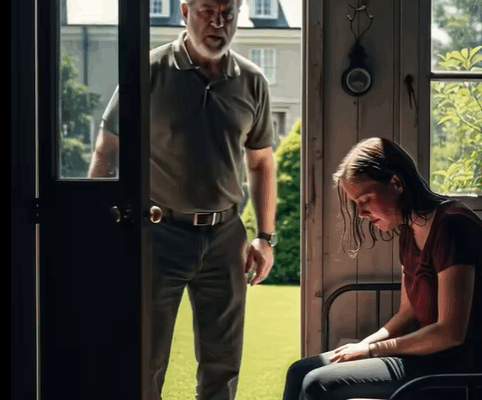I’m Rebecca Thompson, thirty-eight, a senior program director for a healthcare foundation, skilled in identifying hidden problems, protecting the vulnerable, and creating sustainable solutions—skills I never imagined I would need to protect my own teenage daughter from a predator living under our roof for over two years.
Two years earlier, my brother Daniel, forty-two, a software engineer, moved in after his divorce and job loss. My husband James welcomed the help, and our fourteen-year-old daughter Sophie enjoyed his support with homework and activities. Daniel contributed to expenses, helped with projects, and upgraded our home’s technology, becoming a trusted part of daily life. In hindsight, the signs were there—Sophie withdrew from friends and family, and Daniel’s involvement shifted from help to control over her transportation, social life, and privacy.
His technology upgrades—security cameras, parental controls, monitored devices—presented as protection, were actually tools of surveillance. Gradually, he isolated Sophie, replacing our parental role with his own emotional dominance, grooming her under the guise of care. One sleepless night, I noticed light under the door to his basement apartment and discovered Sophie in his bed, confirming my worst fears. My professional instincts took over—I documented the scene for evidence, ensured Sophie’s immediate safety, sought specialized medical care, and contacted law enforcement, Child Protective Services, and victim advocacy organizations.
I dismantled his surveillance systems, preserved digital records, and coordinated with prosecutors, using my expertise in compliance, evidence handling, and legal documentation to build a strong case. Daniel was removed from our home, and we began the difficult process of healing, controlling the flow of information to protect Sophie’s privacy.
My background helped me explain grooming tactics and psychological manipulation to a jury, connect Sophie with trauma specialists, and design a structured recovery plan—individual therapy, family counseling, school support, and gradual rebuilding of her social connections while enforcing strict digital privacy measures. We also investigated Daniel’s ties to community organizations to prevent further harm, advocated for stronger screening processes, and partnered with agencies to close systemic gaps in child protection, especially in cases involving trusted family members.
Technical evidence of his surveillance and control proved the premeditation behind his crimes, resulting in a 15-year prison sentence and civil litigation that secured long-term resources for Sophie’s care. Some family relationships ended when relatives defended Daniel, but these boundaries were essential. Security upgrades and technology safety protocols from our home became models for other families, and our advocacy pushed for institutional reforms—improved screening, training, and coordination between law enforcement and victim services. Three years later, Sophie is thriving and preparing for college, having chosen to share her story to help others while protecting her privacy. Our home is once again a safe haven, and our experience stands as both a warning and a message of hope: predators exploit trust, but with vigilance, coordinated action, and the right support, recovery and transformation are possible.
